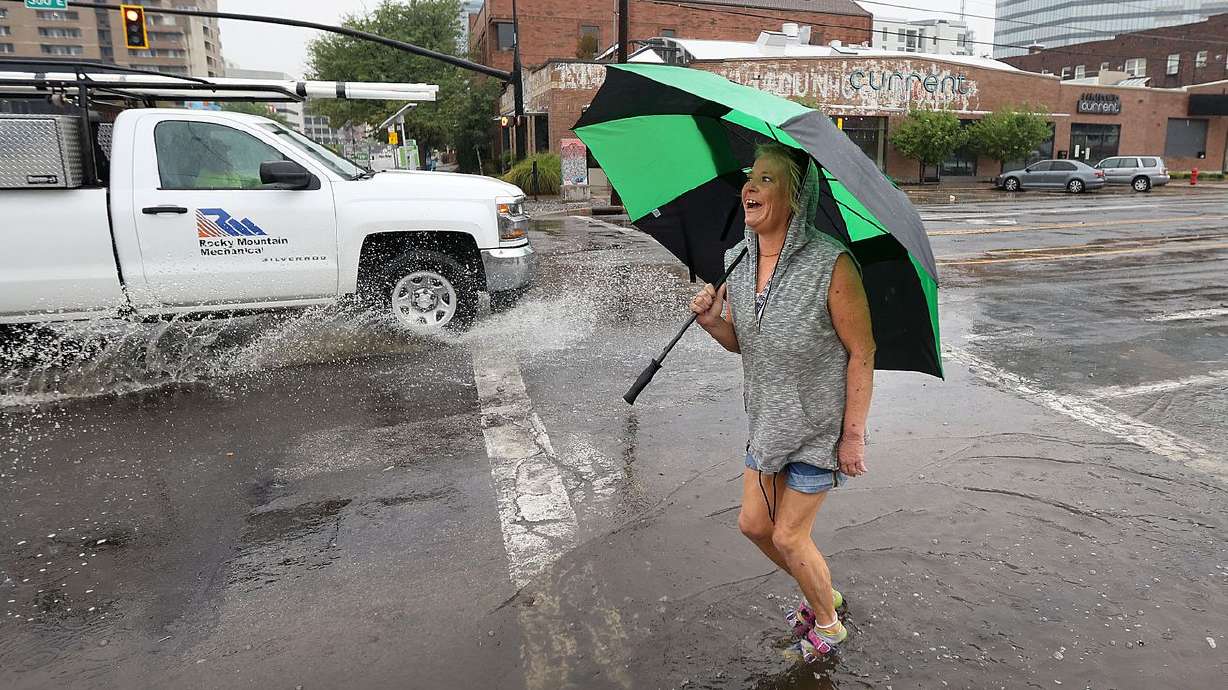Estimated read time: 2-3 minutes
This archived news story is available only for your personal, non-commercial use. Information in the story may be outdated or superseded by additional information. Reading or replaying the story in its archived form does not constitute a republication of the story.
SALT LAKE CITY — As rain sweeps across much of Utah, the big question on the minds of many residents is how much does this moisture help in the face of the unrelenting drought.
Some. To be sure.
But Utah water managers say they need at least 11.5 inches of precipitation between now and snowfall to get to an "average" water year.
This monsoon season, while welcome, will not deliver anywhere close to that. What it will do is infuse much needed moisture into the soils so the spring runoff, hopefully, will be more efficient next year.
"To get streams running at healthy levels while filling reservoirs, Utah needs late summer and early fall storms to return soil moisture levels to normal, which will help snowpack runoff make it to the streams and reservoirs rather than get absorbed by soils," a state-issued drought report said. "The state also needs an above-average snowpack to refill reservoirs."
This summer has been extremely brutal for Utah, with July going down as the hottest month on record at the Salt Lake City International Airport, ever since records started being kept in 1874.
There's been 20 days of triple-digit temperatures logged at the Salt Lake City International Airport in a heatwave that has gripped the West for months.
The hot and arid weather has been taking its toll, with Utah reservoirs, in general, sitting at half capacity.

These latest rounds of storms are helping to temper the arid conditions, with Tuesday's activity focused on central Utah.
On Wednesday, intense storms were creeping into the northern Wasatch Front.
Darren Van Cleave, with the National Weather Service in Salt Lake City, said the storms pose flash flooding threats and will result in a drop of temperatures Thursday in the 60s.
Flooding was happening in Utah County and southern Salt Lake County, hitting areas like Mapleton, Eagle Mountain and Herriman, with possible evacuations.
Agency officials were particularly concerned about the sudden burst of precipitation on burn scars and people being caught up in debris flows.
Flash Flood Warning including Utah County, UT until 4:30 PM MDT pic.twitter.com/IQ1x9ZsTiJ
— NWS Salt Lake City (@NWSSaltLakeCity) August 18, 2021
Correction: A previous version stated July was the the hottest month on record in Utah, ever since records started being kept in 1874. It was the hottest July on record at the Salt Lake City International Airport.










